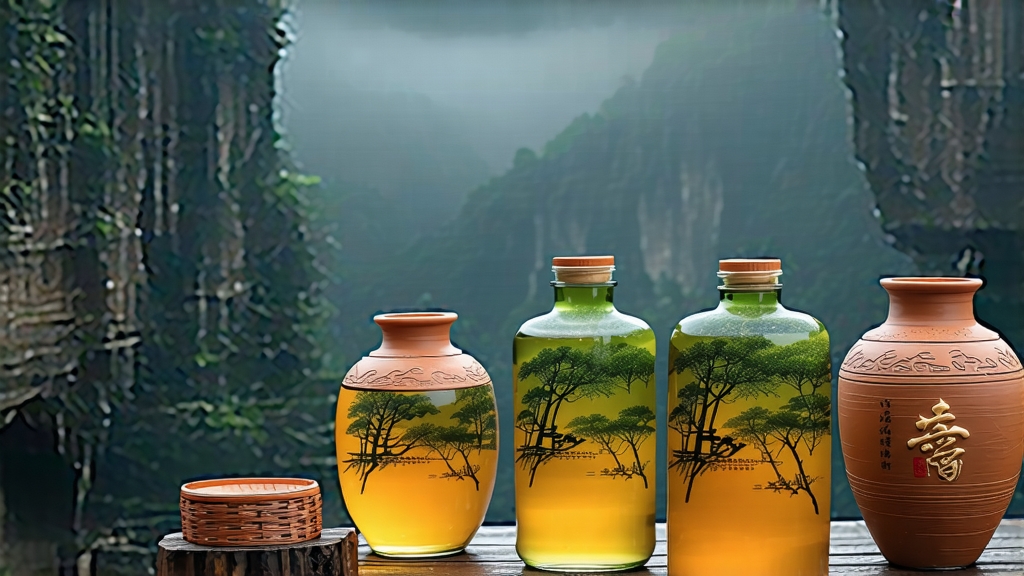
Tucked into the creases of Guangxi’s karst hills, Liu Bao cha has spent four centuries quietly fermenting while its more famous cousin, Pu-erh, stole the limelight. To the international eye, “dark tea” usually means Yunnan’s shou Pu-erh, yet Liu Bao is the older sibling—first exported along the Ancient Tea Horse Road in 1585, loaded onto bamboo rafts that drifted down the Xun River to Guangzhou and on to Malacca. The British East India Company listed it as “Bohea dark” in 1684, and for two hundred years it was the caffeine that kept dockworkers in Penang and Singapore alert. Then it vanished from catalogues, buried in colonial invoices, until a small band of Guangxi tea hunters reopened the cave storehouses of Wuzhou in the late 1990s. What they found was a living archive: leaves that had been breathing through bamboo husks since the Qing dynasty, their flavour turned from rough leaf to liquid mahogany.
Liu Bao is not a single tree but a collective name for large-leaf Camellia sinensis var. assamica growing between 200 and 800 m in the subtropical valleys of Guangxi and neighbouring Cangwu County. The micro-climate is a steam bath: 78 % average humidity, acidic red loam laced with limestone shards, and a karst drainage system that keeps roots moist but never water-logged. These conditions force the plant to produce thick, wax-rich leaves that can withstand the aggressive “wo dui” (wet piling) fermentation that defines all dark teas. Locals divide the bushes into three ecotypes: “old grove” (guan cha) planted before 1950, “collective garden” (she cha) from the 1960-70s, and recently propagated “long-stem” (chang geng) clones selected for higher theabrownin content. Each type contributes a different octave to the final cup—old grove gives camphor and betel nut, long-stem adds molasses bass notes.
Plucking begins on the first cicada call of late March, when two leaves and a bud still wear their spring down. The picked leaves are carried in bamboo baskets lined with banana leaf to the village courtyard, where they are “killed green” in woks heated to 280 °C for exactly four minutes—long enough to destroy leaf enzymes but short enough to preserve the thick cell walls needed later for microbial grazing. A 45-minute sun-wither on hemp mats follows, curling the leaf like antique parchment. What happens next is Liu Bao’s signature: the “mountain stacking” (shan dui) process. Rather than the concrete floors used in Yunnan, Wuzhou tea masters build a pine-scaffold rack inside a natural cave mouth where temperature stays 24–26 °C year-round. Leaves are piled 70 cm deep, misted with mineral spring water, and covered with jute sacks. Over eighteen days the heap breathes in cycles: heat rises to 55 °C, then the pile is turned with long-handled hoes, re-wetted, and re-stacked. Indigenous microbes—Bacillus licheniformis, Aspergillus niger, and a local yeast Kodamaea ohmeri—convert catechins into theabrownins, releasing a sweet, earthy aroma that villagers describe as “old cellars after rain.”
Once fermentation is judged complete by the master’s nose—an olfactory calibration passed from father to daughter—the leaves are steamed for three seconds, pressed into 40 kg bamboo baskets (longtong), and moved deeper into the cave. Here the tea enters a slow-motion aging concert: limestone walls exhale cool moisture, camphor trees outside infuse the air, and periodic charcoal fires keep humidity at 75 %. Every July the baskets are rotated, and every third year the top layer is flipped to the bottom, ensuring even micro-oxidation. After seven years the leaf turns chestnut-brown, and after fifteen it acquires the coveted “golden flower” (Eurotium cristatum) spores that sparkle like frost under LED light. Unlike Pu-erh, Liu Bao is never compressed into cakes; the loose basket form allows air to tunnel through, giving a smoother, more resinous liquor.
To brew Liu Bao you need patience and a clay teapot that has “lived” through at least one season of oolong